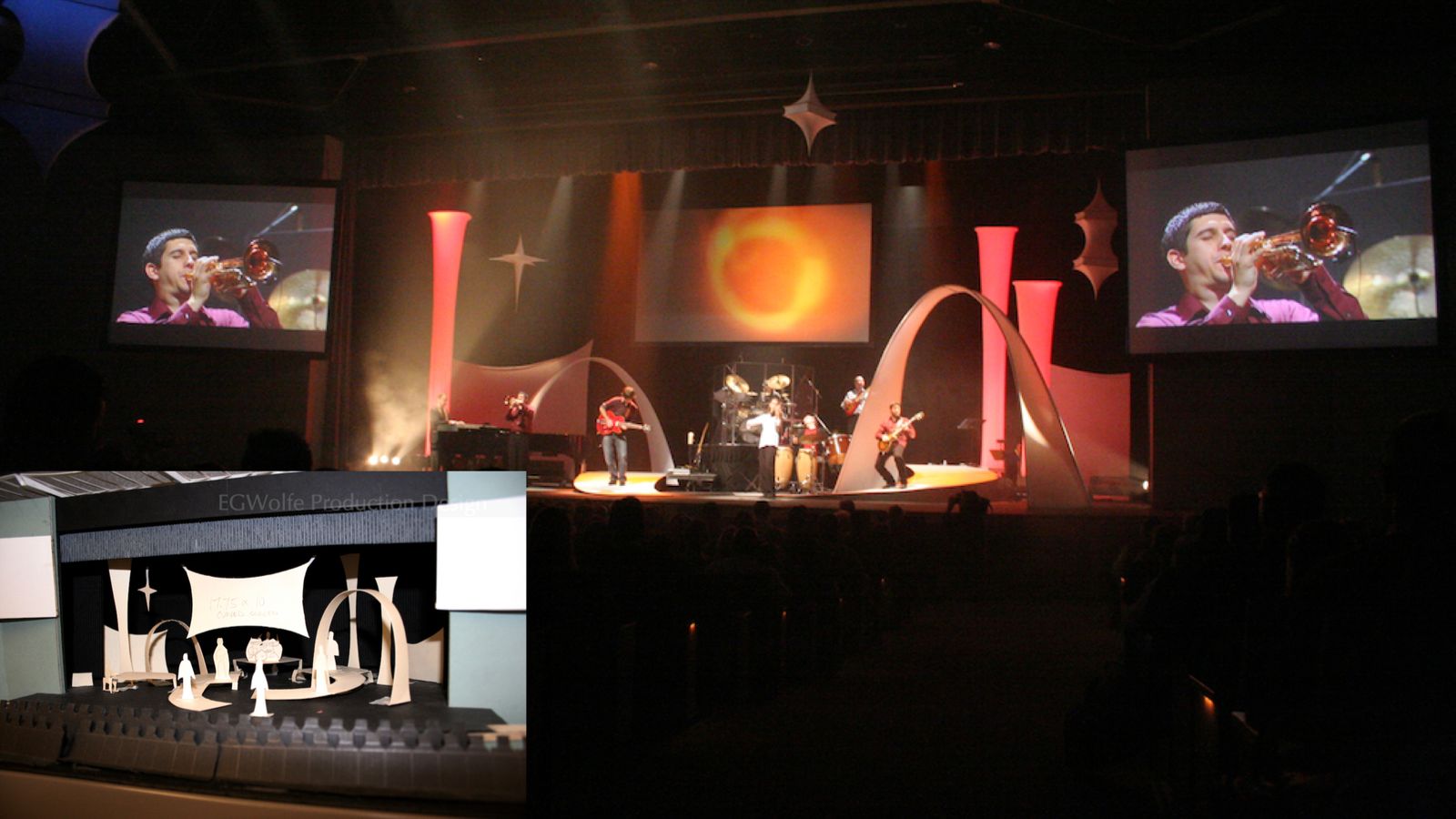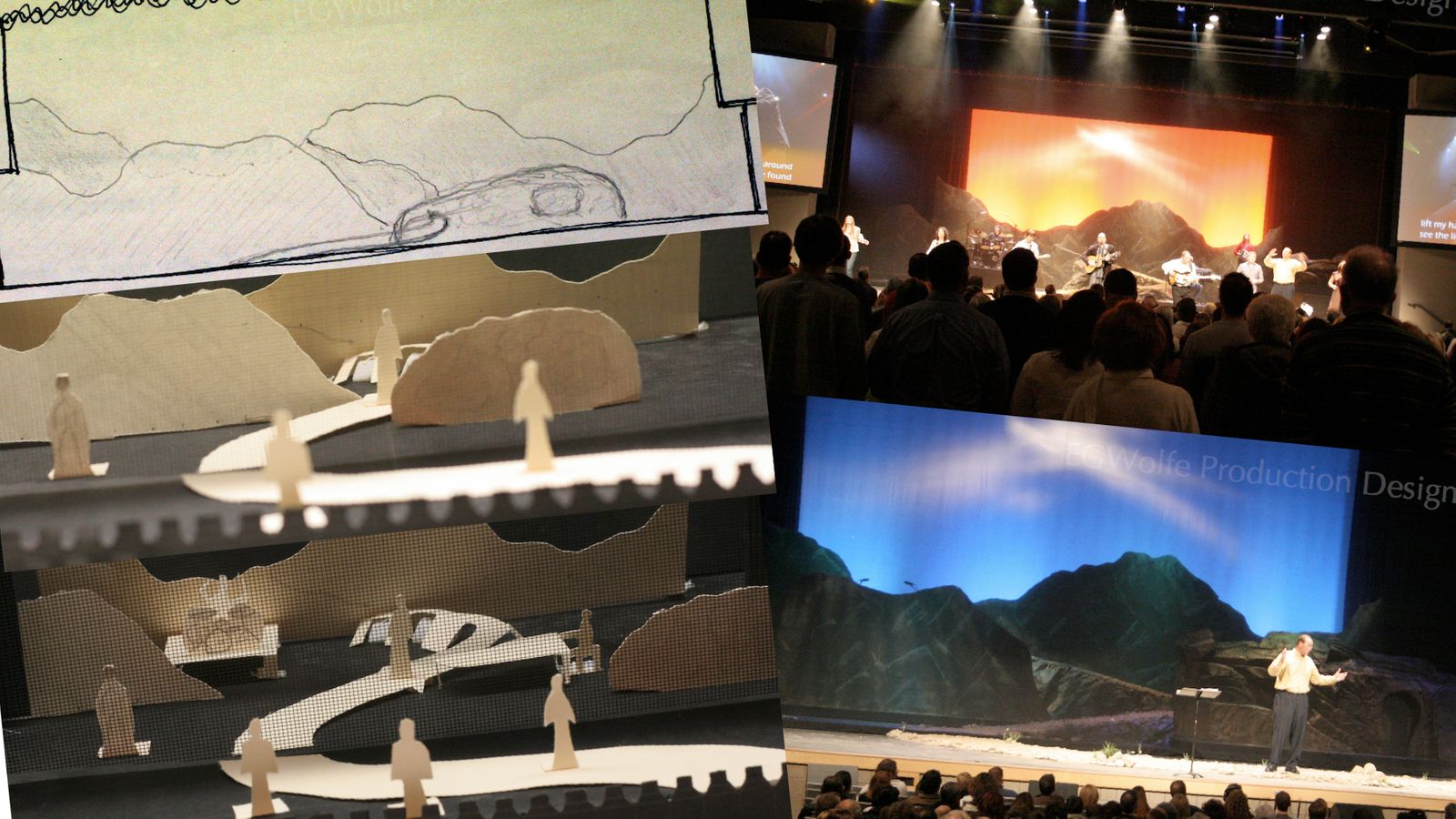Prototyping
Posted on October 18th, 2019
I was asked recently about what prototyping looks like in my design process. It varies. It depends a lot on the timeline of the project, but I really do love to bring both my team and the client along with the idea. Even if only for myself, I like to play with the idea in tangible space. Sometimes it’s as low-fi as a sketch and some card-stock that I cut out for shapes that I play around with in a scale model of a stage. Sometimes a 3D rendering is helpful. If possible (especially when designing for a build for multiple locations) it’s great to build as near to a actual size prototype that we can play with in the lighting and context of the actual stage

We wanted to see how the arches and ramps would let us see performers through and atop of the beauty; and get a sense of what the layers of design would feel like from various angles.

The pastors of this old church wanted a way to update the look of their space that for low cost could help give their congregation more than just a fresh coat of paint but see a vision for the future

We wanted to talk about a road into the mountains where the narrater could take the audience on a journey along a dusty road; but that on a cue, the mountains could literally move to reveal a live band that could add to the experience. I began with a sketch; I then moved to playing with the model. Then, we built prototype flats to test how the rolling worked. We learned that putting them on rails was key to the success of everything being in the same exact place for lighting and blocking every move. We also had a main campus to show how the texturing with paint as well as light was so crucial to realism. A bonus that you might notice in the bottom left image is that you can see how I even added a bit of screen material to show what a scrim might be placed in the mid depth to help add to the forced perspective and picturesque scene.
